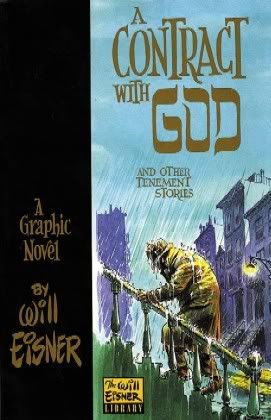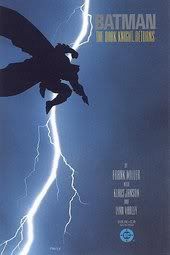Common Myths about Comics
When we were kids, we used to read books with lots of pictures and funny anecdotes of a small-town kid or group of teens. Today, unless you're a Jap or a cult fanatic, comics as a popular medium of storytelling have so many misconceptions to a commoner’s standpoint. In behalf of the league of loyal people who believed that comics is an art form, we want you to review these common misconceptions about a graphical form of narrative that you always considered as “kid stuff.”
MYTH: Comics is for the kids, if not for perverts.
TRUTH: There are many kinds of story and as a form of visual storytelling, comics is not only for kids. It’s true that comics from Europe and Japan have lots of adult-themed stories but a comic in general targets people of all ages. Every author is free to create his own story, whether it is a social commentary, fantasy, science fiction, parable, parody, historical account/documentary, “mockumentary,” propaganda, educational supplement, or the combination of these. The usage of the word “comic” started during the early days of the newspaper funnies in the US and by the end of 19th century until now, comics has evolved with the rising number of mature-themed books (and readership), eclipsing its initial definition as ‘funny book’ into a more correct term as ‘graphic novel’ or ‘graphical fiction’.
MYTH: Comics were done to produce cartoons.
TRUTH: Hundreds of draft sketches, pre-production drawings, storyboards, and conceptualizations are the primary raw materials used to produce cartoons and animations, not necessarily comics. Today, we usually see animations that are based from comics and manga, but it doesn’t mean that all comics were done to make an animated movie. Though it’s true that we see numerous Hollywood adaptations of franchised comic books, it doesn’t automatically mean that a graphic novel author or writer targets the motion picture industry as the reason of making their works. The copyright author is the only one who is free to choose which path and method he is going to utilize in order to tell and express his story to the audience.
MYTH: Comics destroys the mind of a child due to sex & violence.
TRUTH: First and foremost, the parents should be responsible for cases of juvenile delinquencies. It’s true that popular culture influences the young mind but raising a God-fearing and values-oriented child into a law-abiding citizen in the near future are the primary duties of the parents, not comic books. To be specific, you cannot substitute comic books to the Holy Bible or to any of the children’s classic lit like Tom Sawyer or Gulliver’s Travels (or Ibong Adarna if you’re a Filipino). The parent has that responsibility to choose and check what kind of book his child reads, just like selecting various TV shows for his kid. Though we see lots of comic books today for mature audience ‘coz there’s a good number of readers preferring social-realism and more mature stories, there will always be comic books for children. The wide-ranged comic readership resulted to the establishment of standard ratings and regulating bodies (i.e. Comics Code of America) to check the values expressed in every comic book to be published and produced. This is to ensure that mature comics must only be accessible to people of ages 18 and above.
MYTH: Nerds, outcasts, and other eccentric people create Comics.
TRUTH: This is a cheap myth, but what really are eccentric people? It depends on how you define it, but comic books are not exclusively created by those kinds of people known to be eccentric. Graphical narrative transcends eccentricity, ethnicity, and even the intellectual state. These days, you could even see a 5-year-old kid drawing pictures and telling you a story to your amusement. But to clarify this issue, talented individuals who can draw, write, and clearly express a story can create comics. Some may be considered eccentric, fool, or genius, but as long as an individual wants to tell and draw stories in sequential and graphical form, he can make it. Talent is the essential prerequisite of a good story and art but not eccentricity. The late Charles Schulz and Will Eisner are just two of those highly-respected creators in the comics industry but they were never considered eccentric (and will never be) by their friends, fans and family. Comic artists and writers live a normal life trying to make both ends meet, even if they always struggle in the beginning. For sure, these artists just love what they are doing and constantly aspire to improve their own style of writing and art through a period of time in order to make a name-- an identity uniquely their own in the industry.
MYTH: Comics were made to make big bucks and to become famous.
TRUTH: It’s true that there are people in the comics industry getting rich, if not richer from the success of their works, but also, there will always be people (rich or poor) who take a stand and maintains what the great Will Eisner asserted for his career and for the entire industry. This issue is also basically on a country-to-country basis (compare the comics boom in Japan to the dead-rotten and identity-blurred comics industry in the Philippines), but the point is that the most credible and respected people in the industry are the ones that consider their own works as an art-- their passion. There are struggling artists and writers who continue to create and make their works just to tell a good story or two. Lots of people in the underground scene opted to remain anonymous in their works but still continued to create, making themselves the concrete proof that comics were not made to earn big bucks or become popular. A simple respect from their peers is enough, and popularity is just a by-product and not an aim.
These misconceptions are just examples of how comics are being misunderstood and mistreated as a cheap and childish form of entertainment. No wonder here in my country, a national comic archive doesn't exist because politicians and some narrow-minded entities in the academe never believed that comics/grovels are literature, and comic book illustration as an art. Even the national film archive is yet to be built, but it's another story. In some case comics maybe cheap, but not always childish, crass, violent, nor pornographic.
As a closure to this short and biased (i gotta admit it) essay, let me quote Neil Armstrong--- the first man to walk on moon:
“Ever since Galileo, the things that we’ve been seeing are beyond human understanding and comprehension.”
TRY READING THESE

Will Eisner's A Contract With God

Art Spiegelman's MAUS --the first grovel depicting the Holocaust memoirs of Spiegelman's dad, and eventually winning a Pulitzer Prize

Dark Knight Returns by Frank Miller

Questioning the validity of superheroes in a real world, Alan Moore created this magnifiscent piece of story in 1985 about humans who happened to have superpower but still struggling in the real world. "Who watches the Watchmen?"








